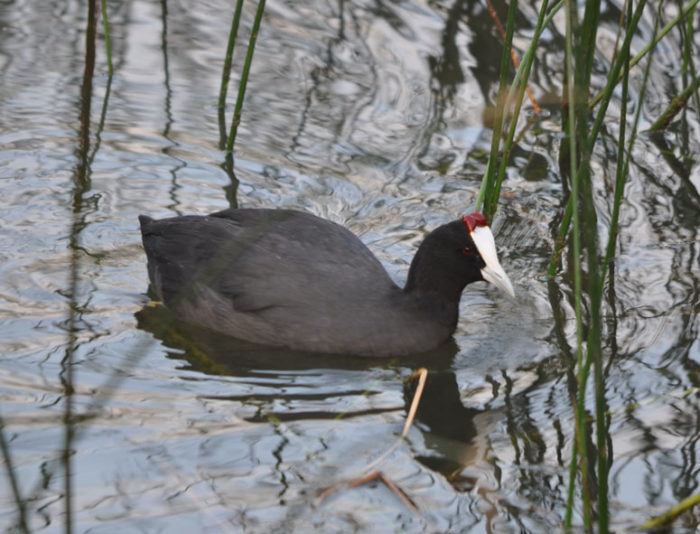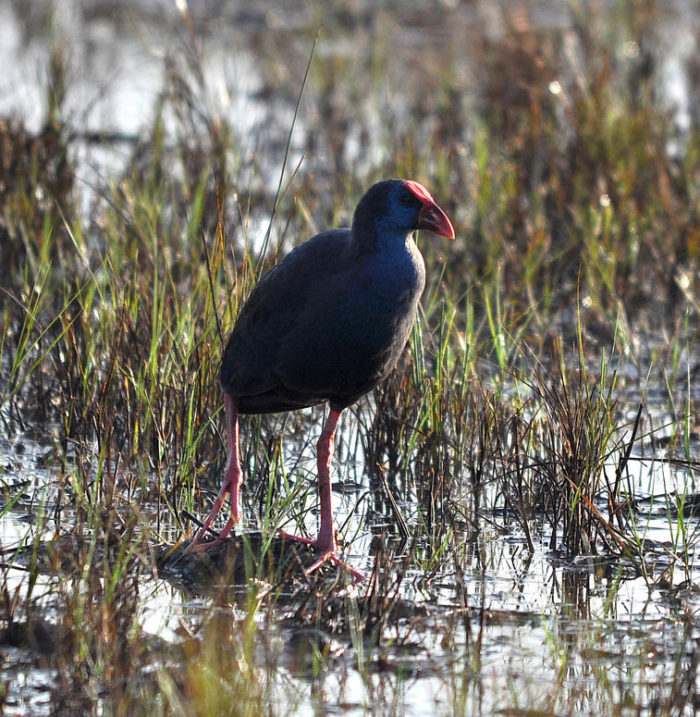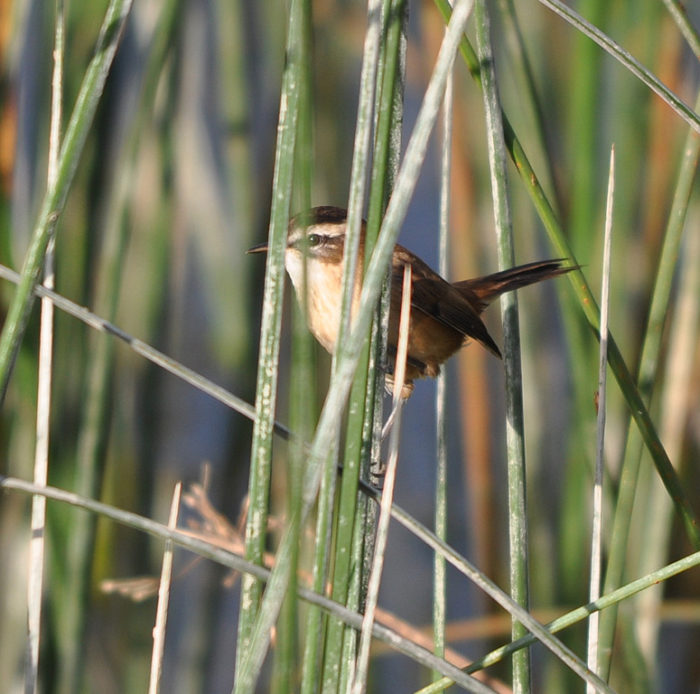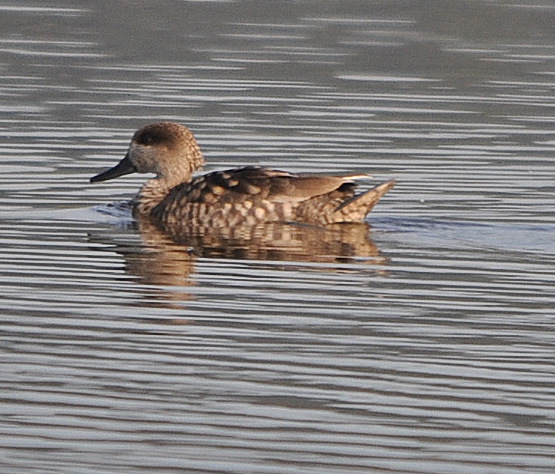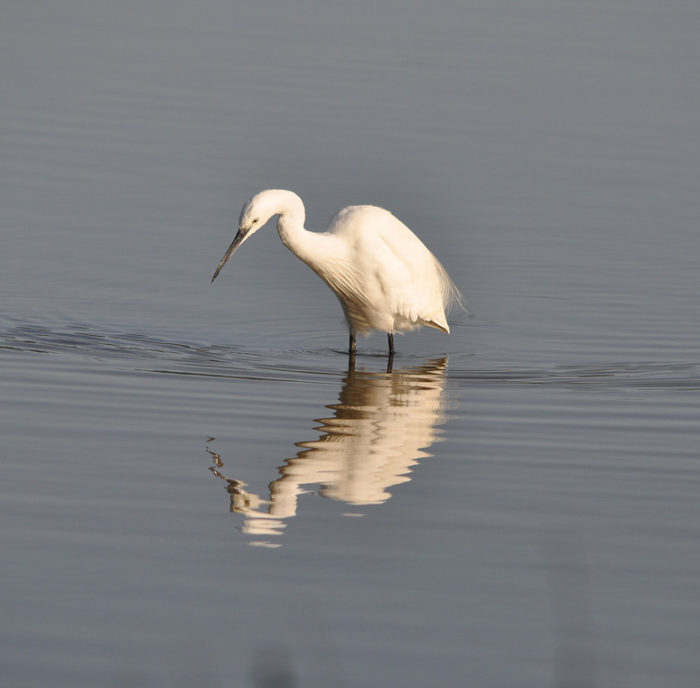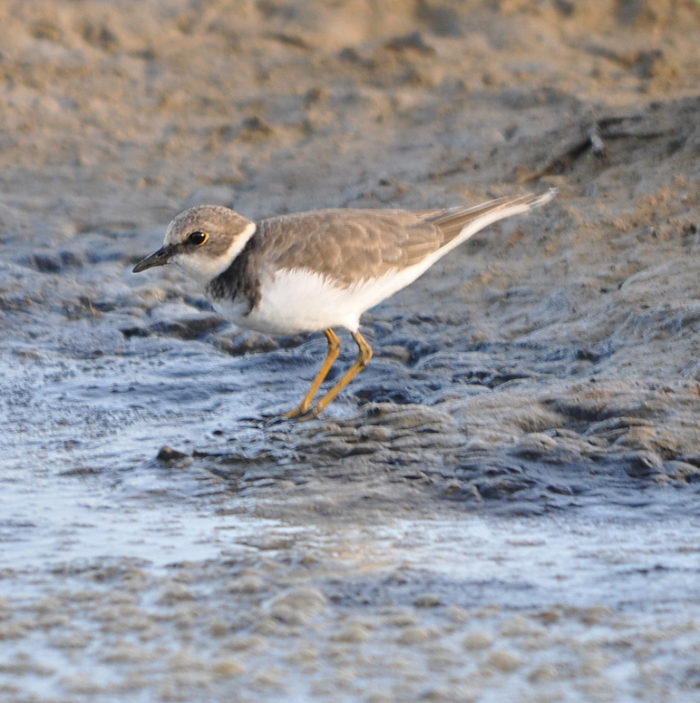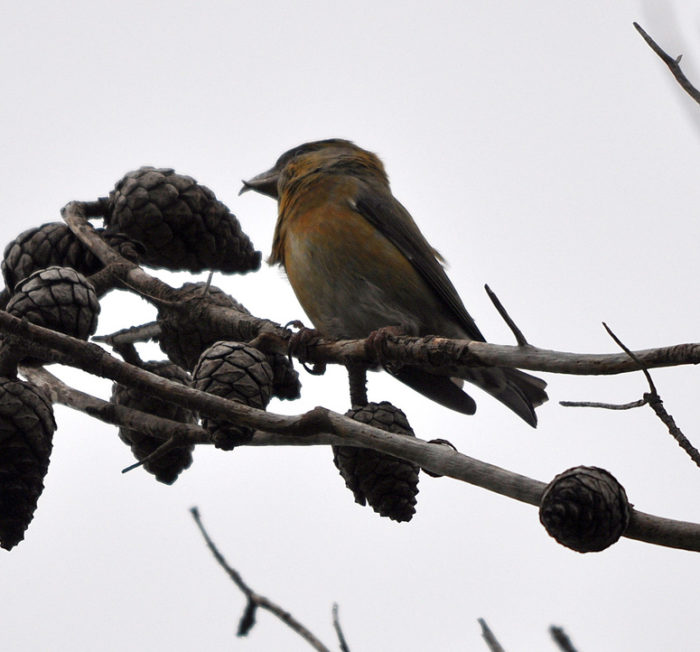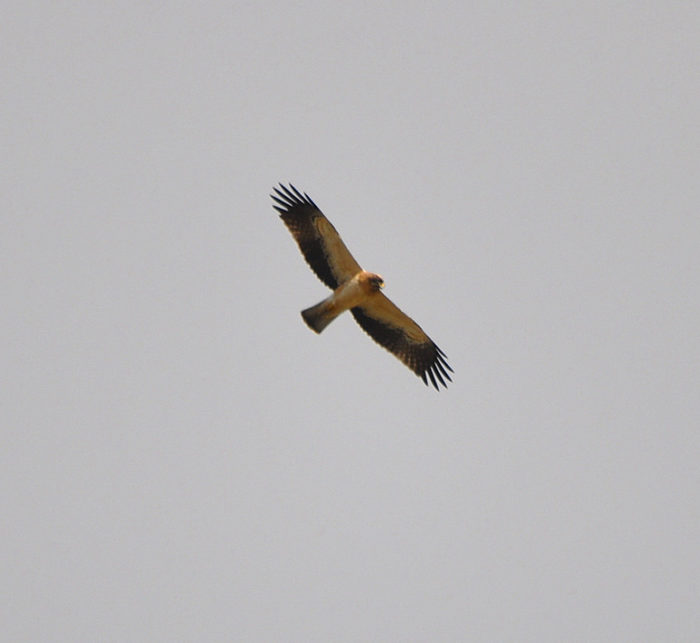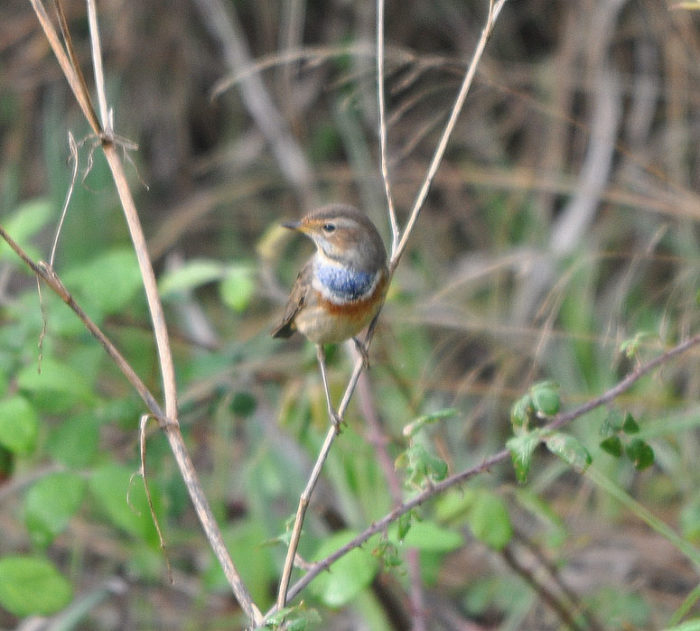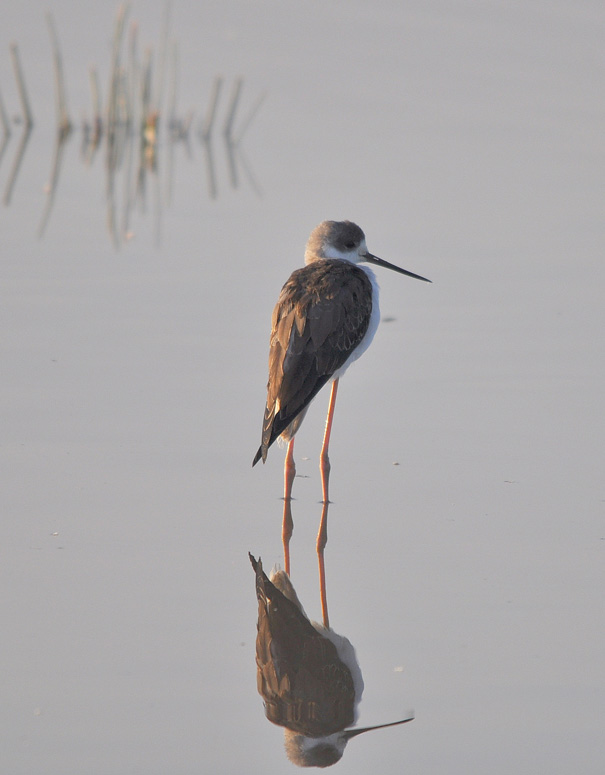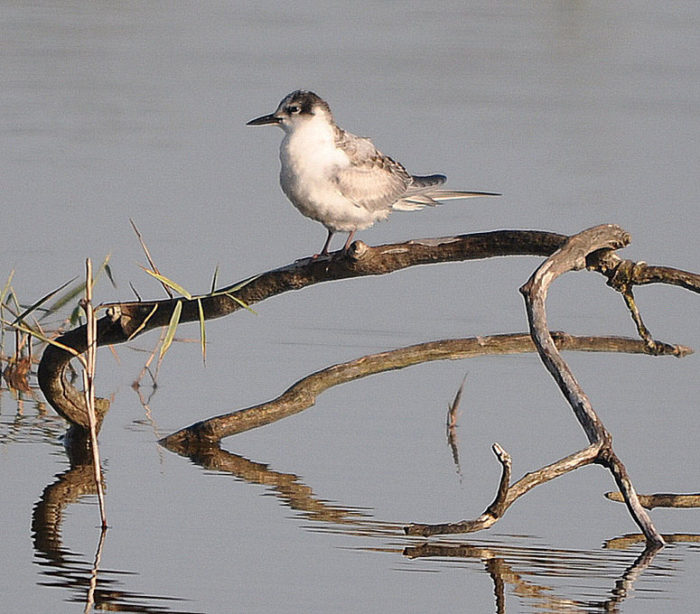INTRODUCTION
This is around our 16th trip to Mallorca and we have birded both spring & autumn in approximately equal numbers. Both have their good points. In spring the number and variety of bird species is greater, but you have to put up with 1,000’s of Lycra clad louts infesting the island’s roads, making journeys to and from birding sites a tadge on the difficult side. It probably sounds a bit petty, but they do really need to be considered as they have their time trials and races through the narrowest of lanes. The autumn sees the mass migration of most of these pests and the start of the long protracted autumn migration of birds, in what seems to us ever decreasing numbers.
We suppose we are lucky that we can recall chivvying up waiters for our evening meal in order to attend the bird meetings at 8 o’clock in the Pollensa Hotel. In those days well over 80 like-minded folk would meet up to swap info. We also remember, with some regret, when these were changed to late afternoon; prime birding time was lost should you wish to attend. Consequently numbers dwindled and eventually the hotel called time; there just weren’t enough folk buying refreshments for it to remain an attractive proposition to the owners. All attendees were encouraged to spend a little at the bar before leaving, both by Graham and latterly David. Both have since passed away and are sorely missed by all those of us fortunate to call them friends.
As with all our trips to Mallorca, less of the island seemed on offer to the birder, with access both pedestrian and vehicular being eroded with each visit. A long 6 foot chain link fence has been erected along the barren scrubby land on the left of the metalled road leading down to the Depuradora. This was a great area for larks, pipits and finches. Several spring visits have been enhanced by Gull-billed Tern hawking over this area. Alas access has now been denied.
ACCOMMODATION
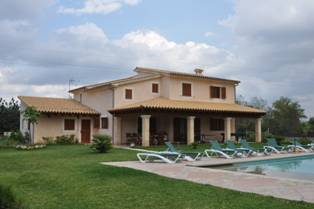 Tradition was broken this year, in that for the first time in many years we didn’t use “Select Villas” for our accommodation. With the company being sold a couple of years ago, the new management, in our opinion, didn’t seem able to provide the value for money deals their predecessors did. Villa Plus seemed able to provide the type of accommodation we wanted, at the sort of prices we thought gave good value for money. The villa we hired was called “Palliser” and was set in a rural location between Pollença and Port de Pollença. Calling Stone Curlews were often heard during the night, as was a distant Scops Owl on a couple of occasions. Total cost of this 4 bedroom, 4 bathroom, (2 en suite) villa including flight and car hire was £1,613 for the 2 weeks. In our humble opinion, good value for money. The villa also boasted satellite T.V. (English stations), DVD player, Play Station, dish washer, auto washing machine and a full size table tennis table with plenty of good ping-pong balls and bats. It also had a full size pool table and a large swimming pool with sun beds and parasols.
Tradition was broken this year, in that for the first time in many years we didn’t use “Select Villas” for our accommodation. With the company being sold a couple of years ago, the new management, in our opinion, didn’t seem able to provide the value for money deals their predecessors did. Villa Plus seemed able to provide the type of accommodation we wanted, at the sort of prices we thought gave good value for money. The villa we hired was called “Palliser” and was set in a rural location between Pollença and Port de Pollença. Calling Stone Curlews were often heard during the night, as was a distant Scops Owl on a couple of occasions. Total cost of this 4 bedroom, 4 bathroom, (2 en suite) villa including flight and car hire was £1,613 for the 2 weeks. In our humble opinion, good value for money. The villa also boasted satellite T.V. (English stations), DVD player, Play Station, dish washer, auto washing machine and a full size table tennis table with plenty of good ping-pong balls and bats. It also had a full size pool table and a large swimming pool with sun beds and parasols.
FLIGHTS
Our flight, which was booked through Villa Plus as part of the package, was with Thompson Air from Birmingham. The flight departed on time at 08:30hrs landing a few minutes early at Palma at 11:00hrs local time. Our return flight was not quite as uneventful as we were delayed by striking French air traffic controllers. We wish they would confine their disputes to inside France.
TRANSPORT
Our vehicle was hired as part of the package through Villa Plus at a cost of £322:00 for the 2 weeks. It was a Group D Kia, Ceed, 1600cc diesel 5 door, with air conditioning. Although the vehicle had a few lumps and bumps it performed perfectly and was very frugal on fuel, which incidentally was 1.19 Euros per litre.
SELF CATERING
As previously stated in other trip reports, we prefer self catering for the flexibility it allows and are not constantly worrying about meal times. It would be true to say that in our opinion the cost of living is slightly higher than in the UK. Something that couldn’t have been said not so many years ago. Our preferred eatery is the C’an Cuarassa which is situated on the bay midway between Port de Pollença and Alcudia; both the food and the service are excellent. A set menu, with several choices of starter and main, is available for 28Euros. This also includes excellent house wines both red & white (half carafe), bottle of water, bread roll and pâté, a small aperitif, dessert, coffee, home made chocolates and a complementary short from the bar; ‘excellent value’.
WEATHER
Temperatures in October usually range from the low 70’s (°Fahrenheit) to the high 70’s dependent on cloud cover. Rain is a possibility, which can be heavy and prolonged. This year we had a great first week with wall-to-wall sunshine and temperatures nudging the low 80’s. The 2nd week was in stark contrast, with prolonged periods of rain. Tuesday, Wednesday and Thursday of the second week saw almost continual rain with short dry interludes, making birding a tadge more difficult, although it’s amazing how quickly things dry up.
DAY 1 – Sat 2/10/2010
As previously stated, our flight was on time and we arrived on the island a few minutes early. The plane was parked away from the terminal so we had to be bussed. As we usually do, we stayed on the plane until last; we can’t understand why folk dash off the plane only to stand at the baggage carousel waiting for their luggage. The only difference this time, was when we got off the plane we joined half a dozen other passengers on the tarmac with no bus. Having waited about 20mins we decided to move under the wing for some shade. It was at this point that one of the ground crew asked why we hadn’t caught the bus. “It went without us” was the collective response. A short-wave radio message was sent and a bus arrived after another 10 minutes. With the exception of an unwanted bag, our bags were the last to come on the carousel. With no further delays we picked up our hire car and drove up to the north of the island in glorious sunshine with the car’s temperature gauge showing 79°F – ‘lovely’.
We had previously hired a villa just a couple of hundred yards from ‘Villa Palliser’ so we had no problems in finding it. We dumped our bags and made our way to the local supermarket to pick up general provisions. On our return we cooked a meal, unpacked and acquainted ourselves with the layout of the villa. A copious first floor veranda looked out over the villa grounds and onto the adjacent landscape. We instinctively knew that this would be put to good birding use during our stay. As darkness fell Jude came from the kitchen saying she could hear Stone Curlew calling. Rushing onto the veranda we were soon playing Stone Curlew calls from the iPod. Almost immediately we had a response followed by a bird flying very low over our heads. Welcome to Mallorca!
DAY 2 – Sun 3/10/2010
Today dawned with a cloudless sky and the temperature rose during the day to 27°C. Up at first light, we ensured we were at the Albufera Marsh before the gates are officially opened, something we have done for many, many years. The Night Heron roost was very much in evidence with several dozen birds encountered. The Cattle Egret roost, several hundred strong, had transferred itself to the Tamarisk bushes adjacent to the elevated boardwalk. We were somewhat taken aback to be challenged by the reserve staff and informed that there was no public access outside the official opening hours. However, we could obtain a special pass that allowed access outside these times from the reserve office at no cost; this we duly did. We were challenged to produce this pass several times during the holiday, so our recommendation is obtain a special pass and save a lot of aggravation. Several things had happened since our last visit a couple of years ago.
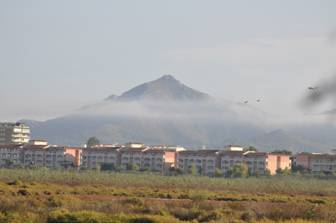 A concrete path has been laid from the centre to CIM hide; Jude thought this was for wheelchair access, although I wasn’t convinced. A new hide has been erected on the same scrape, just a hundred metres or so from CIM. Both timber bridges have also been replaced with new ones. With the early morning sun problematic in both CIM and the new hide, we quickly made our way to Bishops (1). We were totally gob-smacked to see a couple of dozen Marbled Duck loafing on the islands in front of the hide. This is a bird that was rarer than hen’s teeth on the reserve just a few years ago and a bird we have seen just a handful of times during our many visits to the island. Other notable birds seen on the reserve during this visit were: Little Bittern, Night Heron, Cattle Egret, Little Egret, Red-crested Pochard, Marsh Harrier, Booted Eagle, Eleonora’s Falcon, Red-knobbed Coot, Purple Swamphen, Black-winged Stilt, Kentish Plover, Spotted Redshank, Greenshank, Black Tern, Yellow Wagtail, Cetti’s Warbler, Moustached Warbler, Great Reed Warbler and Corn Bunting. With Jude feeling a little under the weather, we returned to the villa by midday.
A concrete path has been laid from the centre to CIM hide; Jude thought this was for wheelchair access, although I wasn’t convinced. A new hide has been erected on the same scrape, just a hundred metres or so from CIM. Both timber bridges have also been replaced with new ones. With the early morning sun problematic in both CIM and the new hide, we quickly made our way to Bishops (1). We were totally gob-smacked to see a couple of dozen Marbled Duck loafing on the islands in front of the hide. This is a bird that was rarer than hen’s teeth on the reserve just a few years ago and a bird we have seen just a handful of times during our many visits to the island. Other notable birds seen on the reserve during this visit were: Little Bittern, Night Heron, Cattle Egret, Little Egret, Red-crested Pochard, Marsh Harrier, Booted Eagle, Eleonora’s Falcon, Red-knobbed Coot, Purple Swamphen, Black-winged Stilt, Kentish Plover, Spotted Redshank, Greenshank, Black Tern, Yellow Wagtail, Cetti’s Warbler, Moustached Warbler, Great Reed Warbler and Corn Bunting. With Jude feeling a little under the weather, we returned to the villa by midday.
DAY 3 – Mon 4/10/2010
Our birding friend, Trevor (‘wing commander’) Weston, was arriving on the island at midday today and we had agreed to pick him up from the airport; so the order of the day was a leisurely breakfast and a slow drive to Palma airport. Although the day started a little cloudy, by the time breakfast had been completed the sun had banished the clouds and the temperature had risen to 27°. Trev’s flight was early and he was waiting for us as agreed, outside the information office. As made possible by the new motorway and dual carriageway leading to the north of the island, we were at the villa eating a light lunch within the hour. A visit to the nearby Albufereta was organised and soon we were scanning both areas of water. An Osprey was quickly discovered perched on a post in the water; several Eleonora’s Falcon hawked the skies overhead for the many dragonflies which they ate on the wing. A few Greenshank were working the shallows with several other waders. A great start to Trev’s visit. Notable birds seen during the visit were:Osprey, Eleonora’s Falcon, Kentish Plover, Snipe, Black-tailed Godwit, Whimbrel, Greenshank, Stonechat, Sardinian Warbler and Linnet. A mile along the bay saw us at the breakwaters near Port de Pollença where Audouin’s Gull, Sandwich Tern, Shag and Cormorant were found.
DAY 4 – Tue 5/10/10
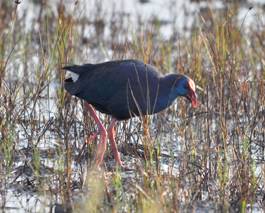 Another cloudless start to the day. Having knocked Trev up at 07:00hrs we were out by half past and walking down the long drive into the Albufera by 08:00hrs. Thousands of Starlings swirled overhead having just left their overnight roost in the vast reedbeds of the Albufera, their numbers swollen by hundreds of low flying Swallows obviously intent on eating as many mosquitos as were eating us. A pause at the Night Heron roost allowed Trevor the opportunity to re-acquaint himself with this somewhat elusive bird. Several dozen were visible with the white breasts of the mature males standing out like beacons. Cetti’s were calling from both sides of the drive together with a late distant Reed Warbler. A quick visit to CIM hide produced a handful of Purple Swamphen, 20> Kentish Plover, plus dozens of Teal, Shoveler, Mallard and Gadwall. A couple of mature female Marsh Harrier were quartering the reedbeds beyond. A stop-off at the bridge over the ‘Gran Canal’ gave great views of Moustached Warbler in the adjacent reeds. Several Red-Knobbed Coot were popping up like corks with beaks full of aquatic weed. A lone Black Tern was a notable addition to our previous visit to Bishops (1). The previous sighting was from CIM.
Another cloudless start to the day. Having knocked Trev up at 07:00hrs we were out by half past and walking down the long drive into the Albufera by 08:00hrs. Thousands of Starlings swirled overhead having just left their overnight roost in the vast reedbeds of the Albufera, their numbers swollen by hundreds of low flying Swallows obviously intent on eating as many mosquitos as were eating us. A pause at the Night Heron roost allowed Trevor the opportunity to re-acquaint himself with this somewhat elusive bird. Several dozen were visible with the white breasts of the mature males standing out like beacons. Cetti’s were calling from both sides of the drive together with a late distant Reed Warbler. A quick visit to CIM hide produced a handful of Purple Swamphen, 20> Kentish Plover, plus dozens of Teal, Shoveler, Mallard and Gadwall. A couple of mature female Marsh Harrier were quartering the reedbeds beyond. A stop-off at the bridge over the ‘Gran Canal’ gave great views of Moustached Warbler in the adjacent reeds. Several Red-Knobbed Coot were popping up like corks with beaks full of aquatic weed. A lone Black Tern was a notable addition to our previous visit to Bishops (1). The previous sighting was from CIM.
We returned to the villa for a light lunch before venturing out to the Son Marc valley in the late afternoon. As we were turning into the valley both Jude & Trevor had spotted large raptors on an adjacent ridge. Scanning with the scopes revealed 8 Black Vulture, a single Griffon and a Booted Eagle. Although the valley was as quiet as we can ever remember, we still managed to see Sardinian Warbler, Wren, Robin, Stonechat, Blackbird, Chaffinch, Serin, Greenfinch, Goldfinch and Cirl Bunting.
DAY 5 – Wed 6/10/2010
Another glorious start, with a cloudless sky the order of the day. After a leisurely breakfast we made our way to the Boquer Valley, which I have to say is a shadow of its former self from a birding point of view and, as has happened far too often in the not too distant past, birds were few and far between. Marmora’s (Balearic) Warbler was most unco-operative with just ‘Sardies’ willing to put in an appearance. Other birds seen at the site were Rock Dove, Swallow, Whinchat, Blue Rock Thrush, Spotted Flycatcher and Great Tit.
After a light lunch back at the villa, we made our way to the back of the Albufera. This is referred to as ‘Es Forcadet in the reserve map, obtained free of charge from the reserve info centre. It’s an area not regularly frequented by lots of birders, but it can be very good for waders if water levels are OK. Access is via the road to Sa Pobla, passing the power station on your right, continue for approximately 3 kilometres and you will come to a bridge which gives oncoming traffic priority. 100 meters past this bridge the road bends tightly right. On this bend is a track on the left which almost appears to be a continuation of the road you’re on; extreme caution should be taken when you turn left here as this is a blind bend. Confirmation that you are on the right track is the large red & white transmitter mast on the right, half way down the track. Incidentally this mast can be seen from all parts of the Albufera reserve. Go to the bottom of the track and park where you can. Walk over the bridge and the cattle grid to your left and you are in the back of the reserve. Birds seen during this visit were: Cattle Egret, Little Egret, Great Egret, Grey Heron, Osprey, Eleonora’s Falcon, Little-ringed Plover, Kentish Plover, Little Stint, Dunlin, Snipe, Wood Sandpiper and Common Sandpiper.
DAY 6 – Thur 7/10/2010
With another promising day, weather wise, in the offing we decided to take the ‘wing commander’ to Son Serra Nou. This has been referred to as ‘Son Serra De Marina’ in our previous reports. Apparently ‘Son Serra De Marina’ refers to the area inland where you turn in to the resort. On arrival, we were surprised at the depth of water in the channel that discharges into the sea. All previous visits have found this channel dry, although the ‘wing commander’ needed a lot of convincing, as he muttered under his breath whilst removing socks and boots and rolling up his trouser legs. 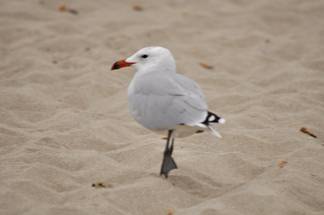 Having negotiated the channel at its shallowest point (4”) we walked towards the lake, noting a small flock of Audouin’s Gull that seemed unconcerned by the holidaymakers making their way along the beach. On reaching the lake, the first thing that struck us was fencing had been erected, obstructing but not excluding progress around the bottom of the lake. Access to the lake is restricted to the southern shore; because this site is not managed, tall vegetation is encroaching along the shore, restricting viewing. Other notable birds seen at the site were: Little Grebe, Black-necked Grebe, Little Bittern, Gadwall, Mallard, Purple Swamphen, Common Sandpiper, Turnstone and Kingfisher. This area is probably the most reliable site for Thekla Lark in the north of the island, we have not failed to connect with these birds during every visit and this visit was no exception. Another bird of note was a handful of Northern Wheatear. A further attraction at this site is the close proximity of a couple of bars offering decent grub and excellent coffee.
Having negotiated the channel at its shallowest point (4”) we walked towards the lake, noting a small flock of Audouin’s Gull that seemed unconcerned by the holidaymakers making their way along the beach. On reaching the lake, the first thing that struck us was fencing had been erected, obstructing but not excluding progress around the bottom of the lake. Access to the lake is restricted to the southern shore; because this site is not managed, tall vegetation is encroaching along the shore, restricting viewing. Other notable birds seen at the site were: Little Grebe, Black-necked Grebe, Little Bittern, Gadwall, Mallard, Purple Swamphen, Common Sandpiper, Turnstone and Kingfisher. This area is probably the most reliable site for Thekla Lark in the north of the island, we have not failed to connect with these birds during every visit and this visit was no exception. Another bird of note was a handful of Northern Wheatear. A further attraction at this site is the close proximity of a couple of bars offering decent grub and excellent coffee.
DAY 7 – Fri 8/10/2010
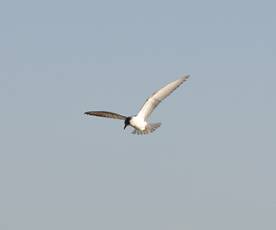 An early morning call to the ‘wing commander’ was greeted with a guttural response, followed up over his early morning cuppa with “bloody cicada’s calling outside the window all-night”. It was our second early morning at the Albufera with Trevor and 07:45hrs saw us walking into the reserve. Both Night Heron, and Cattle Egret were very much in evidence on the walk in, as were thousands of Starling and sparrows. Several distant falcons were seen but remained unidentified; consensus of opinion was that they were probably Hobby. With the exception of a Black-necked Grebe, a Great-crested Grebe and a Lapwing, no new birds were added to the trip list. Notable birds seen during this visit included: Black-necked Grebe, Great-crested Grebe, Night Heron, Cattle Egret, Little Egret, Widgeon, Gadwall, Shoveler, Marbled Duck, Red-crested Pochard, Marsh Harrier, Kestrel, Purple Swamphen, Red-knobbed Coot, Black-winged Stilt, Kentish Plover, Lapwing, Snipe, Black-tailed Godwit, Spotted Redshank, Redshank, Greenshank, Green Sandpiper, Black Tern, Kingfisher, Cetti’s Warbler, Moustached Warbler, Zitting Cisticola, Reed Warbler and Sardinian Warbler.
An early morning call to the ‘wing commander’ was greeted with a guttural response, followed up over his early morning cuppa with “bloody cicada’s calling outside the window all-night”. It was our second early morning at the Albufera with Trevor and 07:45hrs saw us walking into the reserve. Both Night Heron, and Cattle Egret were very much in evidence on the walk in, as were thousands of Starling and sparrows. Several distant falcons were seen but remained unidentified; consensus of opinion was that they were probably Hobby. With the exception of a Black-necked Grebe, a Great-crested Grebe and a Lapwing, no new birds were added to the trip list. Notable birds seen during this visit included: Black-necked Grebe, Great-crested Grebe, Night Heron, Cattle Egret, Little Egret, Widgeon, Gadwall, Shoveler, Marbled Duck, Red-crested Pochard, Marsh Harrier, Kestrel, Purple Swamphen, Red-knobbed Coot, Black-winged Stilt, Kentish Plover, Lapwing, Snipe, Black-tailed Godwit, Spotted Redshank, Redshank, Greenshank, Green Sandpiper, Black Tern, Kingfisher, Cetti’s Warbler, Moustached Warbler, Zitting Cisticola, Reed Warbler and Sardinian Warbler.
Having returned to the villa for a light lunch, we visited the pine tree plantation on the access road to Cala Sant Vicenc’. This is a good area for Crossbill and Firecrest; we weren’t disappointed as both species put in an appearance. If you continue through the wood onto the coastal track you have a good chance of encountering Marmora’s Warbler; the ‘wing commander’ was the only one lucky enough to encounter this species during this visit. Other birds seen during this visit were: Common Buzzard, Eleonora’s Falcon, Redstart, Stonechat, Northern Wheatear, Blue Rock Thrush, Song Thrush, Firecrest and Crossbill. Buzzard, Redstart, Song Thrush, Firecrest and Crossbill were all new ticks for the trip. We’re not sure whether we were unlucky but there were more people walking the woods and walking dogs than we have encountered during all our previous trips combined.
DAY 8 – Sat 9/10/2010
We had planned to have a boat trip from Port de Pollença marina to Formentor today, with the hope of seeing a few pelagics.
According to the bumf in the villa, daily boat trips left the marina at 10:00hrs returning at 12:30, weather permitting. What the bumf failed to say was that the trips alternated between the Formentor trip and a trip that went to the Boquer Valley beach, returning to pick you up at 16:00hrs. As befits “sod’s law”, Saturday’s trip was to the Boquer beach. A quick change of plans saw us shooting up to Formentor by road, not something we would normally consider so late in the day, although it was only 9:30am. Sightseeing trips to the Formentor Peninsula are popular with the ordinary holiday maker, God knows why! All you have is a lighthouse with toilets and a small café, there is a paramour (viewing point) on the way up which does give spectacular views of the rugged northern coast of Mallorca. The road up is 19k from Port de Pollença, of which most consists of hairpin bends with some sheer drops. Not the sort of place you want to meet coach after coach if it can be avoided. Anyway, Trevor had never been and was keen to see the Eleonora’s Falcon colony that breeds there. He wasn’t disappointed – as we arrived at the car park several mainly juvenile birds were performing aerial acrobatics over the adjacent cliffs. We had some of the best views of Balearic Shearwater we have ever had, with dozens of birds drifting north, no more than 100m offshore. Having had the site virtually to ourselves for about 20mins, 2 coaches arrived disgorging their occupants onto the car-park.
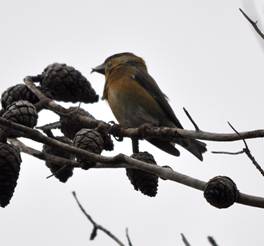 At this point we decided to leave and check out Casas Veyas for Crossbill and Firecrest. On arrival we were greeted with volleys of shotgun fire ringing throughout the valley and it wasn’t long before we noted the recipients of all this shot. Skeins of Red-legged Partridge were frantically disappearing stage left, flapping with long glides, as close to the ground as they could manage. Again we had the best views of Crossbill we have ever had, with several birds sitting out on bare branches. Alas Firecrest did not make an appearance. Birds seen at Formentor and Casas Veyas: Eleonora’s Falcon, Balearic Shearwater, Red-legged Partridge, Crag Martin, Redstart, Spotted Flycatcher, Whinchat, Northern Wheatear, Blue Rock Thrush and Song Thrush.
At this point we decided to leave and check out Casas Veyas for Crossbill and Firecrest. On arrival we were greeted with volleys of shotgun fire ringing throughout the valley and it wasn’t long before we noted the recipients of all this shot. Skeins of Red-legged Partridge were frantically disappearing stage left, flapping with long glides, as close to the ground as they could manage. Again we had the best views of Crossbill we have ever had, with several birds sitting out on bare branches. Alas Firecrest did not make an appearance. Birds seen at Formentor and Casas Veyas: Eleonora’s Falcon, Balearic Shearwater, Red-legged Partridge, Crag Martin, Redstart, Spotted Flycatcher, Whinchat, Northern Wheatear, Blue Rock Thrush and Song Thrush.
We ventured out in the late afternoon for our second visit of the week to the Albufereta. No new birds were added to the trip list, with the exception of 6 Stone Curlew which took flight, calling, after being disturbed on the far side of the west lagoon, a couple of Great Egrets and a fly-by of a single Curlew on the east. Birds of note seen during this visit: Cattle Egret, Little Egret, Great Egret, Marsh Harrier, Booted Eagle, Purple Swamphen, Black-winged Stilt, Stone Curlew, Greenshank, Green Sandpiper, Hoopoe, Cetti’s Warbler, Zitting Cisticola, Sardinian Warbler and Corn Bunting.
DAY 9 – Sun 10/10/2010
With the first significant rain to fall during the holiday and a tremendous electrical storm overnight, it was decided to pay another visit to the Depuradora. The thinking behind this was that we would never be more than a few yards from the car should it start raining. As we drove down the metalled road towards the Depuradora, Trev noted several small falcons sat on the chain link fencing, which all turned out to be Common Kestrel. Whilst scanning the area Jude noted about 20 Stone Curlew and the same number of Red-legged Partridge hunkered down somewhat bedraggled, obvious casualties of the overnight storm. As we turned into the track to the Depuradora car park we noted a loose flock of several hundred birds. Closer inspection revealed Serin, Goldfinch, Greenfinch, sparrows, Starling & Blackbird. As we neared the car park our first Bluethroat was recorded. Trev picked up a second bird from the raised platform. Shelduck and Grey Wagtail were the only other new birds recorded during this visit. Great views of a very obliging male Marsh Harrier were memorable. Several unidentified large raptors were seen riding the thermals to the north. After a long debate it was agreed that the birds were much too far away to make a positive identification, although the consensus of opinion was that they were probably Buzzard.
We returned to the back of the Albufera in the late afternoon. Due to the heavy overnight rain, water levels had risen slightly, making the area less attractive to the smaller waders. Most of the birds seen there on our previous visit were still there, just in smaller numbers. Birds of note seen during this visit: Cattle Egret, Little Egret, Marsh Harrier, Peregrine, Eleonora’s Falcon, Purple Swamphen, Black-winged Stilt, Kentish Plover, Little Stint, Dunlin, Snipe, Greenshank, Green Sandpiper and Wood Sandpiper.
DAY 10 – Mon 11/10/2010
This was the ‘wing commander’s’ last day, so like a condemned man’s choice of final meal Trev was given the option of what to do. His choice was a visit to the Albufereta. Again, we had heavy rain overnight which had affected water levels and just like the back of the Albufera, the levels had had an adverse effect on the suitability of habitat for smaller waders. With birding fairly slow and no new birds recorded, we decided to move on after about an hour and a half and call in to the Depuradora en route to Son Serra Nou, where we decided to have lunch. Again, birding at the ‘Deppy’ was very slow with no new birds recorded. We were soon on the move; the weather had improved by the time we arrived at Son Serra Nou and it was now bright, sunny and very warm. Due to the storm overnight, the waves were a couple of meters high and crashing onto the beach; not particularly good for the birds previously seen here, but great for the plethora of surfers who were now in attendance. The lagoon held nothing new, although the Thekla Lark were far more confiding than previously, with great views of several pairs. Incidentally this was our first day during the holiday when it felt like autumn migration was tailing-off. We returned back to the villa so Trevor could prepare for his departure back home. We left the villa for the airport at 19:00hrs and said our goodbyes to an old friend.
DAY 11 – Tue 12/10/2010
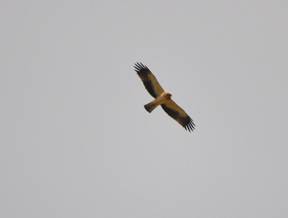 All the portents pointed to several days of severe weather, heavy rain & strong winds interspersed with the odd electrical storm. We pitied the poor sods on the aircraft we could see flying over the island on their way to the airport. The next few days were promising to be testing at the very least. With rain falling constantly until mid-afternoon, we finally managed to get an hours birding in around the car park and finca at the bottom of the Boquer Valley. The only new bird for the trip was a couple of Raven circling the rocks at the rear of the finca. Whilst we stood near the car park a large coach pulled up disgorging about 40 Germans, all togged up for a wet and muddy walk in the valley. It takes more than heavy rain to dampen their spirits! The only other sightings of note were a low flying Booted Eagle, which gave excellent views and 2 very obliging Crossbill, exposed on the dead branch of a Cedar on the track up to the finca.
All the portents pointed to several days of severe weather, heavy rain & strong winds interspersed with the odd electrical storm. We pitied the poor sods on the aircraft we could see flying over the island on their way to the airport. The next few days were promising to be testing at the very least. With rain falling constantly until mid-afternoon, we finally managed to get an hours birding in around the car park and finca at the bottom of the Boquer Valley. The only new bird for the trip was a couple of Raven circling the rocks at the rear of the finca. Whilst we stood near the car park a large coach pulled up disgorging about 40 Germans, all togged up for a wet and muddy walk in the valley. It takes more than heavy rain to dampen their spirits! The only other sightings of note were a low flying Booted Eagle, which gave excellent views and 2 very obliging Crossbill, exposed on the dead branch of a Cedar on the track up to the finca.
DAY 12 – Wed 13/10/2010
Another electrical storm overnight, followed by light rain until mid-morning, influenced our decision to visit the Depuradora initially and then reassess our options later. Very few of the birds encountered during our previous visit remained; even the mixed finch flock was diminished by 75%. However the trip proved worthwhile as we saw our only Montagu’s Harrier (ringtail) for the trip and it allowed us to get re-acquainted with the localised population of Waxbill, the first for the trip and only our second sighting on the island, ever. With the weather remaining kind we returned to the rear of the Albufera. Water levels had risen considerably and bird numbers had decreased correspondingly. Rain returned by early evening, so we returned to the villa.
DAY 13 – Thur 14/10/2010
Another day dawned grey, windy and very wet. With the rain easing a bit and getting slightly stir crazy, we decided to drive on to the front at Port de Pollença and scan the breakwaters from the car. Our previous trip to do the same thing was earlier in the week, when the weather was much warmer and the beach was full; scanning with our scopes it soon became obvious that a few of the sun worshippers were very liberal in the views allowed of all parts of their anatomy, especially if they were drying their selves after a dip. This had been met with a dash of embarrassment on behalf of the ‘wing commander’ who responded with a rather terse “right let’s go”. Today there were no such problems, with only one family braving the elements. Although there was nothing new on the breakwaters, the numbers of Sandwich Tern had risen to 15; both Cormorant and Shag and a Little Egret shared the roost. The rain got progressively heavier, so once again we retreated to the comfort of the villa, where we continued the ‘World Series’ Table Tennis competition which was 5-3 in favour of Pat.
DAY 14 – Fri 15/10/2010
Although the day was grey & overcast, at least it was dry. After breakfast we decided to return to the Depuradora in order to attempt to get a decent photo of Bluethroat. We had established during previous visits that there were at least two territories at the rear of the car park. The day certainly wasn’t wasted, as we saw our first Hen Harrier for the island. With the morning fast fading into the afternoon and now sporting bloodied toes from the ground hugging brambles, we decided to leave the Bluethroats in peace and spend the rest of the afternoon at the Albufereta. The rain had raised the water levels to such a height that waders were no longer an option, although we did have a Pintail and a Black Redstart, both new for the trip.
 The total number of species seen was 110, with the couple of dozen, ever present, Marbled Duck being the highlight.
The total number of species seen was 110, with the couple of dozen, ever present, Marbled Duck being the highlight.
Photos
